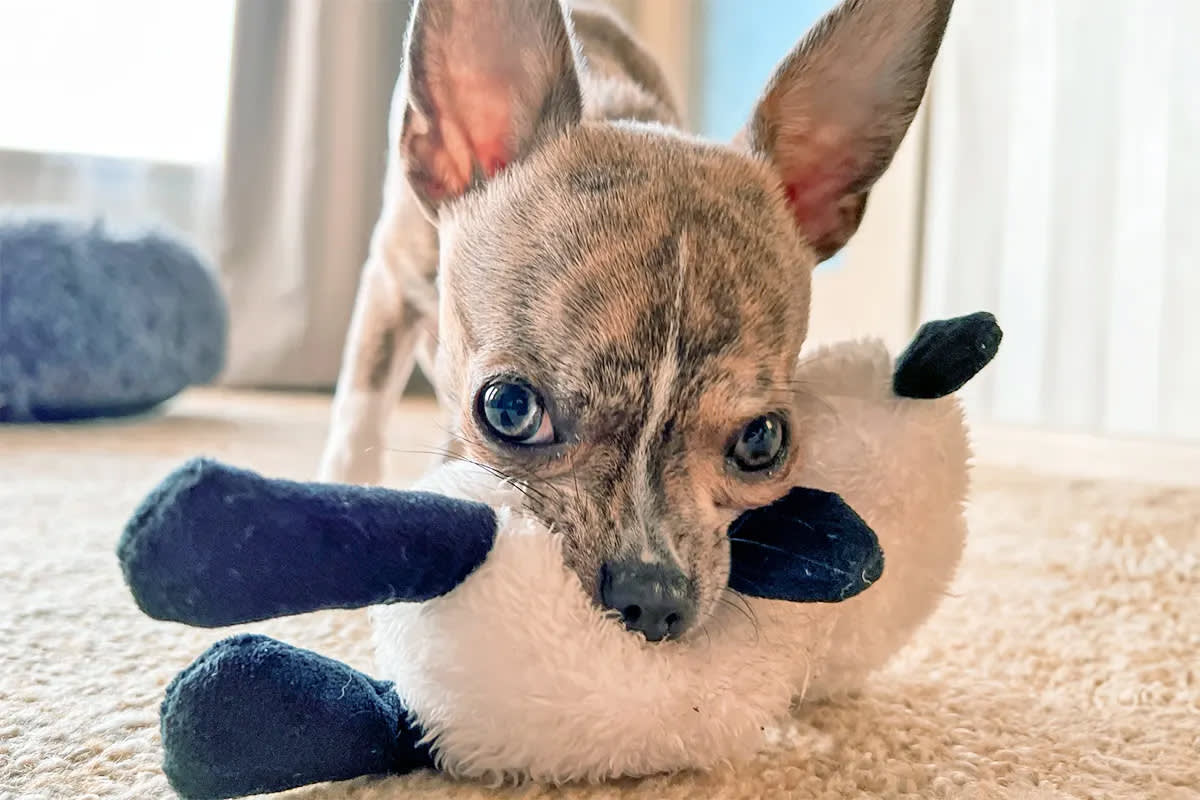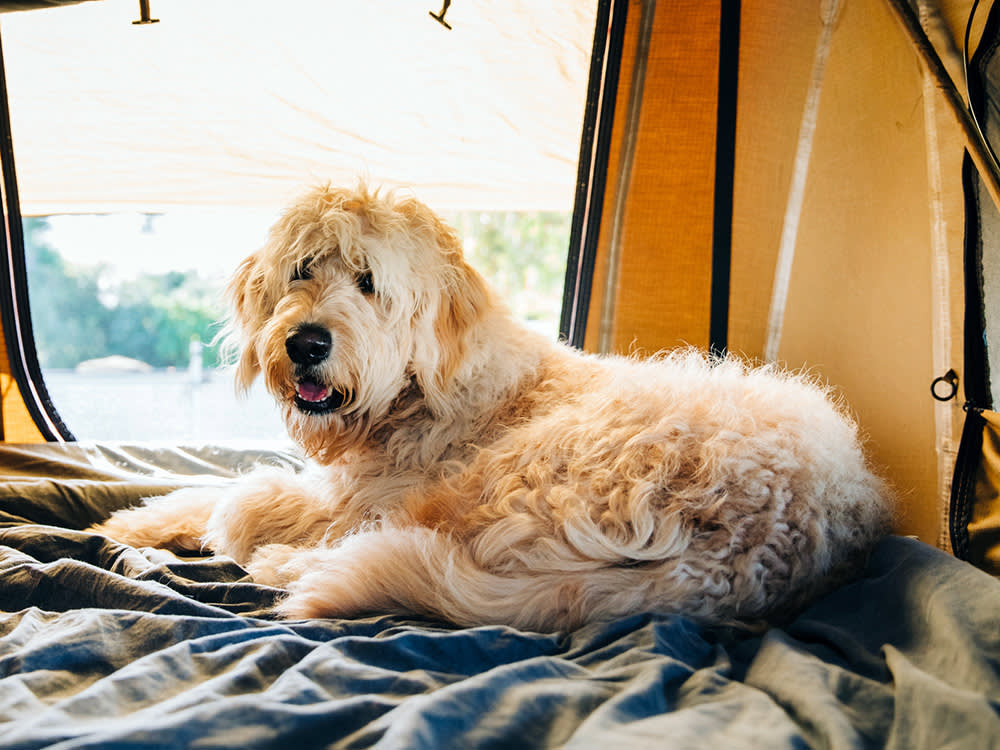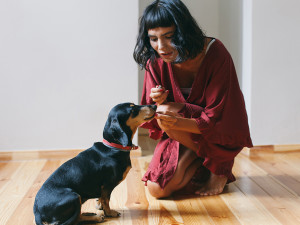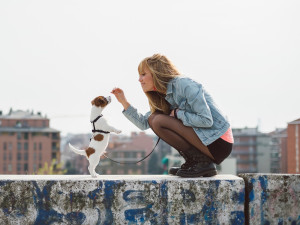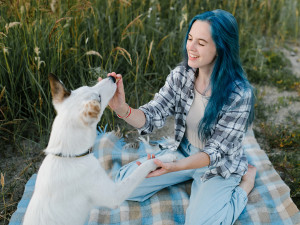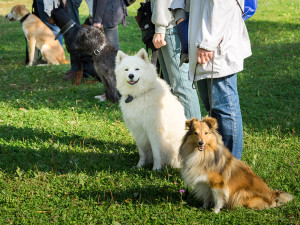How to Stop Dogs From Getting Overly Excited When Holiday Guests Arrive
Expert advice for people with dogs who jump, bark, and generally go nuts when people come over.
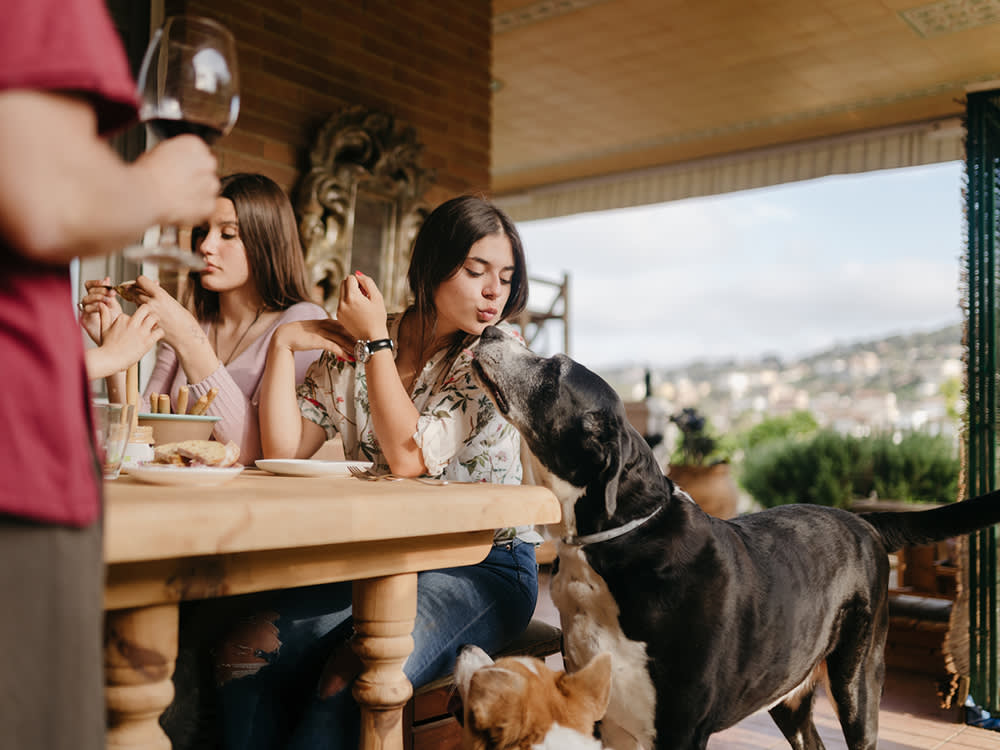
Share Article
I’m hosting a big holiday dinner soon, but I’m a little concerned about my dogs’ behavior. They are pretty high-energy pups, who tend to jump on, bark at, and lick anyone who enters our home. Most of my friends love dogs, but not all. In the past, I've tried redirection, keeping the dogs confined in another room (this curbs the jumping and licking, but not the barking), and having a dedicated dog person monitor the dogs. Do you have any other tips?
Inviting people over can be difficult for people with exuberant, friendly dogs. Luckily, there are a lot of ways to ease the social awkwardness when overexcited dogs (sometimes literally) with humans — and you’re already on the right track. The smallest details can make a big difference, so by adjusting what you’re already doing and adding a few simple new tactics, we can create an approach that will help your pups be their best selves. Here are some ways to tone down your dog’s enthusiastic greeting style.
Redirect your dog with an irresistible item.
This can work like a charm, as long as what you offer is fantastic enough to keep their attention. For toy-motivated dogs, a game of tug or fetch as guests arrive might help them redirect their excitement. Using top-quality, rarely offered chews or treats can make all the difference.
A list of options that may refocus even the most social dogs’ interest includes real bones; Kongs stuffed with steak, chicken or peanut butter; bully sticks (with caution for puppies); Greenies; and stuffed cow hooves. (One caveat: Check with your veterinarian to determine what items are safe for your dog and which should be avoided.)

Briefly confine your dog in a room, behind a gate or in a puppy pen.
Consider moving your dogs to another room while guests enter and are seated. The whole to-do of an entrance — being new people as the door opens, then watching them cross the threshold and enter the house — can be particularly stimulating for pups. Some dogs are able to greet guests far more politely and calmly if they don’t witness their actual arrival. If your dog comes out of another room to see people already seated, they may be less excitable.
The same goes for seeing a guest from behind a gate, which prevents them from rushing up to greet them. That said, some dogs get more revved up if they’re gated-off from visitors — maybe because they’re frustrated. Test how your dog reacts in advance.
Train your dog to go to their “place.”
There’s often so much focus on what we don’t want our dogs to do that we miss opportunities to teach them what we do want. How would you like your dogs to greet visitors? With that picture in mind, actively teach them to do it. One option is to train them to sit and stay in a specific spot when visitors arrive. Make it a comfortable place, such as a dog bed or bean bag.
If visitors want to greet the dogs, they get to interact; if the visitors choose not to, then the dogs stay quietly in their place. Begin teaching them the behavior (going to their spot) when there are no distractions, and work up to more challenging and exciting situations.

Karen B. London, PhD, CAAB, CPDT-KA
Karen B. London is a certified applied animal behaviorist (CAAB) and certified professional dog trainer (CPDT) who specializes in working with dogs with serious behavioral issues, including aggression. She has written for a variety of magazines including The Bark, Clean Run, and the APDT Chronicle of the Dog, and has published in scientific journals including Behavioral Ecology and Sociobiology, Ethology, Ecology, and Evolution, the Journal of Insect Behavior, and Insectes Sociaux. She is the author of seven books about dog training and canine behavior, including the forthcoming My Dog's Mystery Adventure: And Other Stories From a Canine Behaviorist and Dog Trainer.
Related articles
![woman gives small black dog treat for sitting]()
Your Dog Should Do This 30-Day Training Challenge
It’s like your 30-day yoga challenge — except with way more training treats.
![Young blonde woman with a Jack Russell puppy during spring in the city.]()
The Best Training Treats for Dogs in 2025
The most mouth-watering treats for training your pup.
![Old Great Dane dog sitting in grass and looking up at the hand of his owner during a training sessions]()
Are You Making These Common Dog Training Mistakes?
Pro Karen London, PhD shares the most common dog training errors and how to correct them.
![girl with blue hair starting puppy training with white dog]()
Puppy Training 101: How to Train a Puppy
You gotta start somewhere.
![Dog looking out of a red half-door]()
How to Stop Your Escape-Artist Dog From Making a Getaway
Dog trainer Pat Miller’s pro tips for preventing your pup from darting out the door.
![A group of dogs sitting in grass near their trainers in a dog school]()
Think Your Dog Can Be an Obedience Champ?
You don’t have to look like you belong on Best in Show to be a contender.
